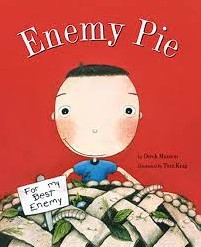My complete list of books read in 2022. If you’ve read any, let’s chat about it! I wanted to write up my thoughts about every single book on this list, but then it would get too lengthy and no one would have time to read this post in its entirety. If you want to know more about a certain book, I am always open to talk about it and discuss. Reading books is my favorite hobby! If you want to learn more about how I was able to accomplish reading so many books, check out my last post.
Key:
📘 eReader books
👂🏼 Audiobook
📕 Physical book
1. 📘Curvy Girls Can’t Date Quarterbacks by Kelsie Stelting
2. 📘Luna’s Rescue by Erica Richardson
3. 👂🏼Educated: a Memoir by Tara Westover
4. 📘👂🏼Seven Perfect Things by Catherine Ryan Hyde

5. 📘He’s Just a Friend by Karly Stratford
6. 👂🏼The Glass Castle by Jeannette Walls
7. 👂🏼Night Road by Kristin Hannah
8. 👂🏼That Summer by Sarah Dessen
9.📘The Orphan Keeper by Cameron Wright
10. 👂🏼A Man Called Ove by Fredrik Backman
11. 👂🏼Go Set a Watchman by Harper Lee
12. 👂🏼 Orphan Train Rider by Andrea Warren
13. 👂🏼 The Orphan’s Tale by Pam Jenoff
14. 📘👂🏼 Anxious People Fredrik Backman
16. 👂🏼Things My Son Needs to Know About the World by Fredrik Backman
16. 👂🏼American Royals book #1 by Katharine McGee
17. 👂🏼My Grandmother Asked Me to Tell You She’s Sorry by Fredrik Backman
18. 👂🏼Forever Boy by Kate Swenson
19. 👂🏼Majesty: American Royals book #2 by Katharine McGee
20. 👂🏼 Inheritance: American Royals by Katharine McGee
21. 👂🏼 The Invisible Life of Addie LaRue by V. E. Schwab
22. 📘👂🏼 The Buddha in the Attic by Julie Otsuka
23. 👂🏼Fish in a Tree by Lynda Mullaly Hunt
24. 👂🏼 Where the Deer and the Antelope Play by Nick Offerman
25. 👂🏼 Wish You Were Here by Jodi Picoult
26. 📕The Stolen Sisters by Louise Jensen
27. 👂🏼The Reason I Jump by Naoki Higashida
28. 👂🏼Ready Player One by Ernest Cline
29. 📕Where the Crawdads Sing by Delia Owens

30. 👂🏼Ready Player Two by Ernest Cline
31. 👂🏼The One Hundred Years of Leni and Margot by Marianne Cronin
32. 👂🏼Book Lovers by Emily Henry
33. 📘He’s Just My Ex by Karly Stratford
34. 👂🏼The Help by Kathryn Stockett
35. 👂🏼To All the Boys I Loved Before by Jenny Han
36. 📕P.S. I Still Love You by Jenny Han
37. 📕Always and Forever, Lara Jean by Jenny Jan
38. 👂🏼To Kill a Mockingbird by Harper Lee
39. 📕The Bodyguard by Katherine Center
40. 📕 Reminders of Him by Colleen Hoover
41. 📕28 Summers by Elin Hilderbrand
42. 👂🏼The Book Haters Book Club by Gretchen Anthony
43. 👂🏼I’m Glad My Mom Died by Jennette McCurdy
44. 👂🏼Tuck Everlasting by Natalie Babbitt

45. 👂🏼Thirst by Scott Harrison
46. 📕In Conclusion, Don’t Worry About It by Lauren Graham
47. 👂🏼The Identicals by Elin Hilderbrand
48. 👂🏼People We Meet on Vacation by Emily Henry
49. 👂🏼Nine Perfect Strangers by Liane Moriarty
50. 👂🏼Have I Told You This Already? By Lauren Graham
51. 👂🏼Maybe in Another Life by Taylor Jenkins Reid
52. 👂🏼My Oxford Year by Julia Whelan
53. 👂🏼 Remarkably Bright Creatures by Shelby Van Pelt
Photo by Caio

















